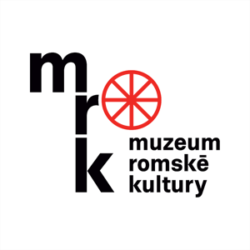Jan Růžička
Jan Růžička, born 1918 in the village of Krasonice, Jihlava district
-
Testimony abstract
Jan Růžička lived in the family house with his mother Emílie and his eight siblings named Josef, Božena, Kristýna, Karel, Jarda, Eda, František and Emílie. Their father Vincenc died when Jan was four years old. They earned their living as farm workers.
In 1940 Jan Růžička was already doing forced labour in Austria in the Metall-Werke munitions factory. He said they sabotaged the work. He fled from there to his home in the village of Štěměchy, where he hid, and Dr. Hůlka[1] secretly treated his injured leg. He was then arrested by the German police in Jihlava, where his wife and two children had already been detained. They were put on a train and taken to Brno, where they were stripped and their hair was cut. They spent two days without clothes. They were then loaded onto a train at three o'clock in the morning; the transport left at three o'clock in the afternoon for Olomouc, where the wagons, twelve in all, were attached to an express train.
No one told them where they were going, but Růžička states that they knew.[2] After arriving at the concentration camp in Auschwitz, the guards drove them off the train like cattle. Their luggage was confiscated, they were taken to a large block where over three days their names were written down, and they were photographed and fingerprinted; they were allowed to keep their clothes. They spent four weeks in quarantine before the family was housed in block 24. The barracks had concrete floors, the walls were made of wood, and a furnace flue stretched along the block. The prisoners slept on bunk beds. There were two toilets for the whole block, for which there were queues and no one was allowed to stay there for more than a minute. The block leaders were Czechs, Germans, and Russians, and the Roma worked as room leaders. There were also criminals among them. Jan Růžička said that "as soon as the gate closed, there was no exception, black and green" [the green triangle on the clothing was worn by convicted criminals and felons, the black triangle was used by the Germans to designate the so-called asocials, which at first included the Roma]. Roll calls were twice a day, and if someone was missing, the prisoners had to stand until the number agreed or the dogs found the fugitive. Those who could, helped those who could not walk, supporting them or carrying them in their arms. They marched to work five abreast and music played on the way there and back; musicians were excused from work. The prisoners worked in the camp, constructing sewers. Jan Růžička said that he worked "on the gassing" [in the gas chambers]; when the transport arrived, 200 Jews were set aside and the rest went "into the gassing" [into the gas chambers]. Some of the guards behaved brutally, routinely knocking a man to the ground, putting a pickaxe on him and standing on the handle; he said that something cracked in the man, and he died.
They were given food three times a day, tea made from alder leaves or clover in the morning to increase their thirst, otherwise they were given beet soup or rotten potatoes unpeeled. They took a litre during the distribution, but often half of it was spilled. The prisoners had access to a canteen where they could buy beetroot, snails and fruit juice. There was plenty of money, he says, some people handed it over, some didn't. He managed to steal a few rings. They did not receive parcels, but some got food from the civilian workmen who came to work in the camp.
Diarrhoea was rampant in the camp, and Růžička contracted typhus, after which he weighed 38 kilograms. Then, in the hospital, he said he managed to cure people of phlegmon, in which their flesh fell off their bodies, their larynxes were visible, and they had pus all over their bodies.[3] Růžička said that he washed them with "foaming water" and thus drew out the pus. When [Josef] Mengele found out, he asked who had cured the patients. He learned from the Polish block supervisor Stefan that it was Růžička. He wanted to know what he did in civilian life. Although Růžička replied that he was a worker, Mengele decided that he would be a doctor. Jan Růžička assisted at autopsies and their evenings were spent with the "pflegern" (nurses).[4]
The highest mortality rate was at work; in his work team of one hundred people, four to five prisoners died every day. He said that the cruellest moments he experienced were in Auschwitz at the beginning and then in Ellrich. He remembers the flea-infested clothes, and then they even took the clothes away. Nobody believed they would ever go home.
Once, when eight or ten boys escaped from Auschwitz, six of them were found and brought back. All the prisoners had to go to a roll call where the escapees were tortured by dogs. When the kapos only hit them lightly, they had to lie down and the SS men beat them with a bull whip studded with nails. Růžička once received eighty lashes, after which he lay on his stomach for three weeks and was scarred for life.
From Auschwitz he was transported to the concentration camps of Buchenwald, Dora, Harzungen, Ellrich and Sachsenhausen. At Buchenwald they were quarantined and did not go to work, they just took the contents of the toilets to the fields three or four kilometres away. He spent eight months in the Dora camp. They were herded into a tunnel 32 metres high and 20 metres wide, in which he spent six months with 35,000 or 40,000 prisoners; they dug a tunnel into the rock and in the end there were only about a thousand or twelve hundred prisoners left. When they were brought out, he saw nothing – and then when he saw the yellow flowers in the meadow, it was as if he was seeing the whole world. He also worked in a tunnel in the Harzungen concentration camps near Sachsenhausen, as well as “Ehrlich”,[5] where they went to work in wagons in a ten-kilometre-long tunnel. The system consisted of 500 clothed men working in the tunnel and 500 naked prisoners waiting in the barracks. They walked barefoot on gravel for half a kilometre to go to the toilet, and they waited three hours outside the tunnel in the rain and freezing cold for the change of shift.
Then they were locked in wagons for a week, after which they were taken to “Cela”,[6] where they were liberated by the American army on April 15, 1945.
Jan Růžička described the elation after the liberation. The American soldiers offered to punish the SS members on behalf of the prisoners, but they told them they would not behave in the same way as the Germans. So the SS men were locked up and guarded by Hungarian prisoners for a month. Then the SS men were liquidated.[7] From the first of May, the prisoners had outings, which were in great demand, so there was confusion outside the office where the Americans wrote their names down. Růžička lined the people up, and when a soldier, a Czech-American, noticed this, he told Růžička he could help them find food for the prisoners. There were about 5 or 6 of them, and they went around the surrounding villages and confiscated food. At each farm they showed a paper and people had to give them food. One peasant woman said she had nothing, but when they went into the cellar they found a large supply of tinned food, butter, and so on. The American Czech ordered them to destroy it.
- [1] First name not given.
- [2] Transport to Auschwitz on 7 March 1943. (ed.)
- [3] This was noma (cancrum oris), which occurred in children and adolescents only in the gypsy camp. The disease began with a dark blister on the oral mucosa, which rapidly enlarged and led to tissue breakdown. A special ward for noma patients was set up on Mengele's orders in Block 22, with Professor Berthold Epstein, M.D., from Prague, as head physician. (ed.)
- [4] The autopsies of the prisoners were performed by the Hungarian doctor Miklós Nyiszli; his memoirs were published in English as Auschwitz: A Doctor's Eyewitness Account, Arcade Publishing, 2007. (ed.)
- [5] Harzungen was actually a branch of the Mittelbau I (Dora) concentration camp. There was a branch of the same camp at Ellrich, not Ehrlich. (ed.)
- [6] Probably Zella-Mehlis in Thuringia.
- [7] It is not stated how.
When Jan Růžička returned home on July 17, 1945, he found that everything had been stolen from them. His brother Karel, whom he had last seen in Auschwitz, also arrived. He had no news of his wife and children. His wife eventually returned about two months later, but alone - and it was not long before she died.
How to cite abstract
Abstract of testimony from: NEČAS, Ctibor, ed. Nemůžeme zapomenout = Našťi bisteras : nucená táborová koncentrace ve vyprávěních romských pamětníků. Olomouc: Univerzita Palackého, 1994, 196-199. Testimonies of the Roma and Sinti. Project of the Prague Forum for Romani Histories, https://www.romatestimonies.com/testimony/jan-ruzicka (accessed 11/7/2025) -
Origin of Testimony
A loose transcript of the memoirs was made on 19 June 1987 by Vlastimil Ludvík.
-
Where to find this testimony




